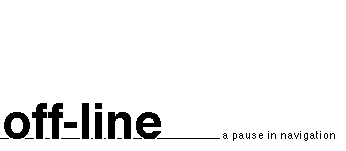This isn’t about “navigating” the web. It’s
about the sort of navigation – planning, charting, sailing,
steering, reaching, tacking – that a company needs to trace
its course in the internet. When I think about this problem
as we face it today, it reminds me of an experience I had
twenty years ago. I was the skipper of a small sailboat (the
one in the picture on this page). At dawn, as we sailed out
of a bay in Sardinia, we were in thick fog. For a few hours
navigation was difficult.
We had no radar on that little boat. We had a
depth-sounder, but it could only tell what was under the boat
– not ahead. And after a while charting points were lost; it
wasn’t easy to understand exactly where we were, where we may
hit a rock in shallow waters, or when we could bump into
something floating. We moved slowly and carefully and we got
trough safely. But from that experience (and a few others of
the same sort) I know that sailing in the fog isn’t easy.
Close to coast the depth is tricky. Out at sea it’s
deeper and more predictable – but there are other risks. A
large ship may not see us on its radar; and even if they see
us they can’t steer fast enough to avoid us if we don’t get
out of their way. Or there can be something like that
submarine that sunk a Japanese boat off Hawaii.
In the internet it’s quite hazy. Often it’s thick fog.
There are no reliable charts or pilot books. The environment
is alive and changing – like coral reefs in tropical seas.
When we are in open waters there is unpredictable traffic and
no shared “right of way” concepts to avoid a collision.
The temptation, in this sort of circumstances, is to stay
in port an wait for the fog to lift. But this fog won’t go
away with a rising sun or a wisp of wind. It can last for
years. If and when it clears, it will be too late.
Another temptation (it’s being done) is to send out
crafts and crews that one can afford to waste. Some will hit
a rock, or sink, or get lost. But if one finds the Eldorado...
That’s the (old) concept of the so-called
“new economy”. The results are painfully visible.
A third (and even worse) solution is to landfill. To
build “highways” to be used by cars or other land
vehicles. But the sea of the net is wide and turbulent. The
decaying ruins of those failed attempts are cluttering the
shallows and adding to the risks of uncharted waters.
There is only one effective solution. We must learn to
sail in the fog. Finding our way, step by step, carefully
and patiently. With effective, practical tools and sensitive
instruments. Above all, with sound crafts, good crews and
sober, clear-minded, alert skippers. It can be done. But
it’s very different from the way things have been done
so far by hasty, greedy and careless captains, with incompetent
crews and absent-minded navigators, bumping into one another
and crashing into visible rocks in full, clear daylight.



